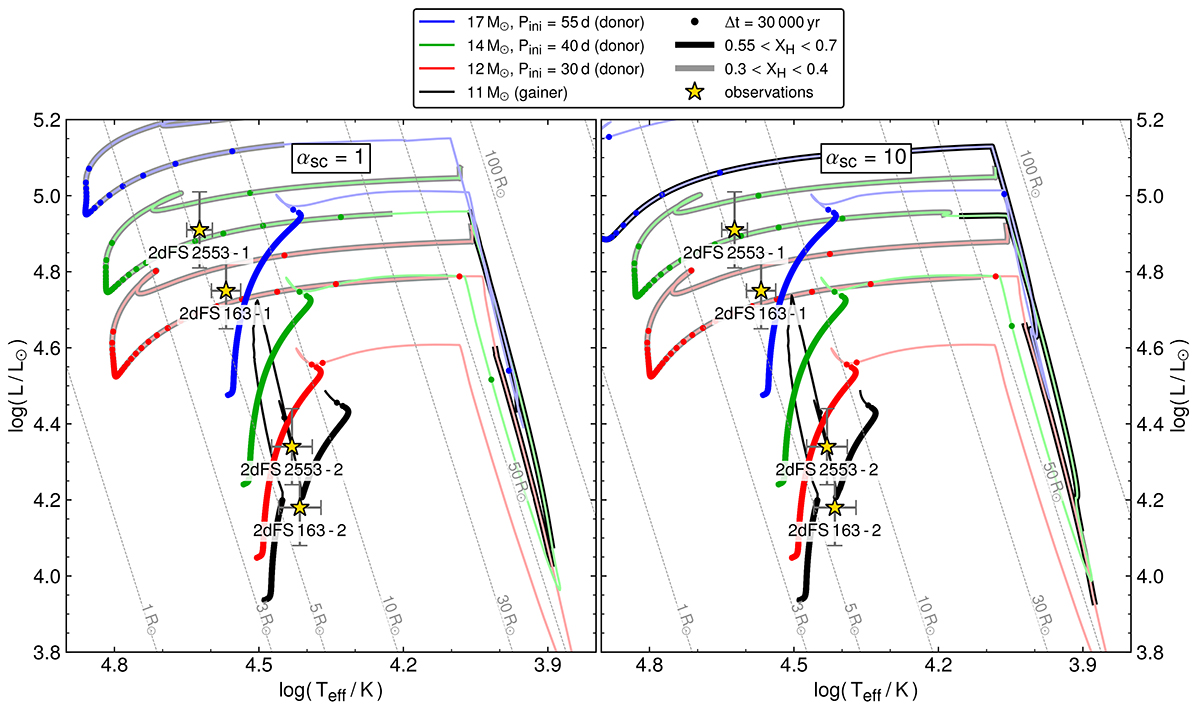Fig. 15.

Download original image
HRD showing possible evolutionary pathways of the primary and secondary components for two different sets of semiconvection mixing efficiencies. The donor tracks with initial masses 12 M⊙, 14 M⊙, and 17 M⊙ are shown as red, green, and blue solid lines. The initial orbital periods are chosen, such that the binary has a period of about Pmodel = 95 ± 5 d after the mass-transfer event. The surface hydrogen abundances of our models that are consistent with the one measured for 2dFS 2553 is highlighted by a thick black contour and the one measured for 2dFS 163 as a thick gray contour. As the tracks of the secondary models do not differ drastically, only for clarity the track of the mass gainer of the system with the 17 M⊙ donor is shown as a solid black line. To highlight phases where the stellar models spend most of their time, we overplotted the tracks with dots, equally spaced in time steps of Δt = 30 000 yr. The observed positions of the primary and secondary components of the SMC binaries are shown as yellow stars.
Current usage metrics show cumulative count of Article Views (full-text article views including HTML views, PDF and ePub downloads, according to the available data) and Abstracts Views on Vision4Press platform.
Data correspond to usage on the plateform after 2015. The current usage metrics is available 48-96 hours after online publication and is updated daily on week days.
Initial download of the metrics may take a while.


